New trees have been planted in Cavendish Street, Enmore, but for pavement fanciers the interest lies in the method used to install them. The process was far more complex than simply plonking a tree in a hole. It involved such things as ‘in-road planting’ and ‘structural soil’ and ‘plastic cells’ and ‘permeable paving’ – all designed to address ‘multiple issues, including impact of trees on infrastructure, safety of footpaths, enhancement of the urban tree canopy, landscape amenity and urban water management’.* And preventing the road surface from cracking or caving in.
Marrickville Council seems pretty pleased with the project, which is the first of its kind for this municipality, and maybe for the whole of Sydney. It’s been interesting watching the process, but I have some misgivings.
It all started more than three years ago, when Marrickville Council began removing very large fig trees from the footpaths on the street. Although enjoyed by birds and bats, these trees broke up the paving and invaded underground pipes. I wrote a blog post about local mourning when the first tree was removed.
The story resumes in April this year, and here’s how it goes. The Council excavates three huge rectangular pits in the street, digging deep down into the clay beneath the surface of the road.
Underground infrastructure, including gas pipes, is adjusted and gravel is spread in the bottom of each hole.
Next, a layer of large plastic cells is positioned in the pit and ‘structural soil’ is tipped in between them. Another layer of cells and soil is added, this time with a rectangular hole in the centre fenced off with plywood formwork. As I understand it, the plastic cells act as support for the roadway above; the structural soil is a mix of gravel and loam that resists being compacted and allows tree roots to spread and grow.
Over the soil comes a layer of geotextile then another layer of gravel.
Concreters build retaining edges around the central tree hole to form a ‘blister’. This will prevent cars bumping into the tree trunk.
Permeable pavers are laid. Rain falling on the road will flow towards this area of porous paving. This means that street run-off will infiltrate the tree pits instead of gushing down the gutters and into stormwater drains.
Within a day or so, on a nice rainy morning, advanced trees are lifted into the central hole, the formwork is removed and more soil is tipped around the large root ball. The three trees are Waterhousia floribunda ‘Green Avenue’, a cultivar of the rainforest Weeping Lilli Pilli that is expected to grow to 16 metres.
The project is not quite finished. A garden will be planted inside each blister. But the safety fencing has been replaced by witches’ hats and the official photographer has been sent to take photos for Council publications. As the unofficial photographer and busybody I’m rushing into e-print with this blog post.
In my next post I will talk about how my admiration for this aboricultural and civil engineering feat is tempered by reservations about the push and pull of local council policies.
*Marrickville Matters, December 2013, p.9.

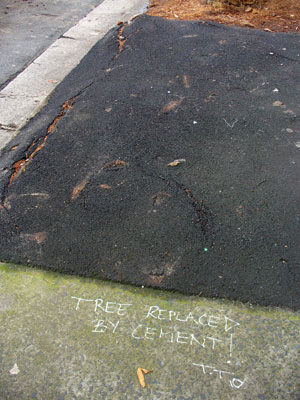
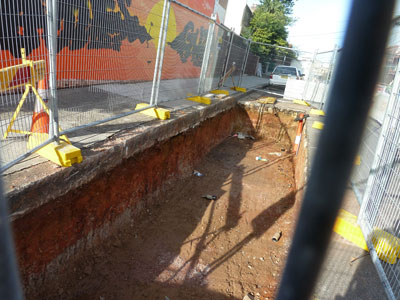
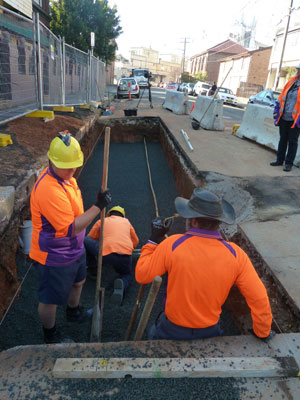
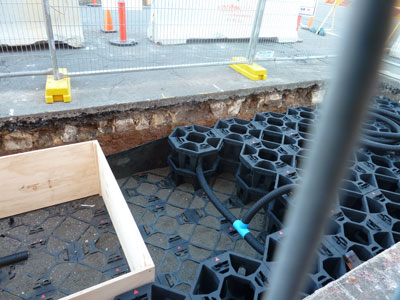
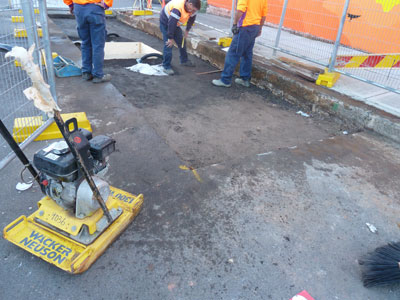


Thanks for this post. I shared the link on my blog. Jacqueline 🙂
Thanks for sharing, Jacqueline. It’s possible you won’t like the post that I wrote to follow this one. It’s called ‘No parking’ and it gives another side to the story. But in general I endorse Marrickville’s draft Master Street Tree Plan. By the way, I regularly read your ‘Saving our trees’ blog. I am always learning new things from it, and not only about trees.